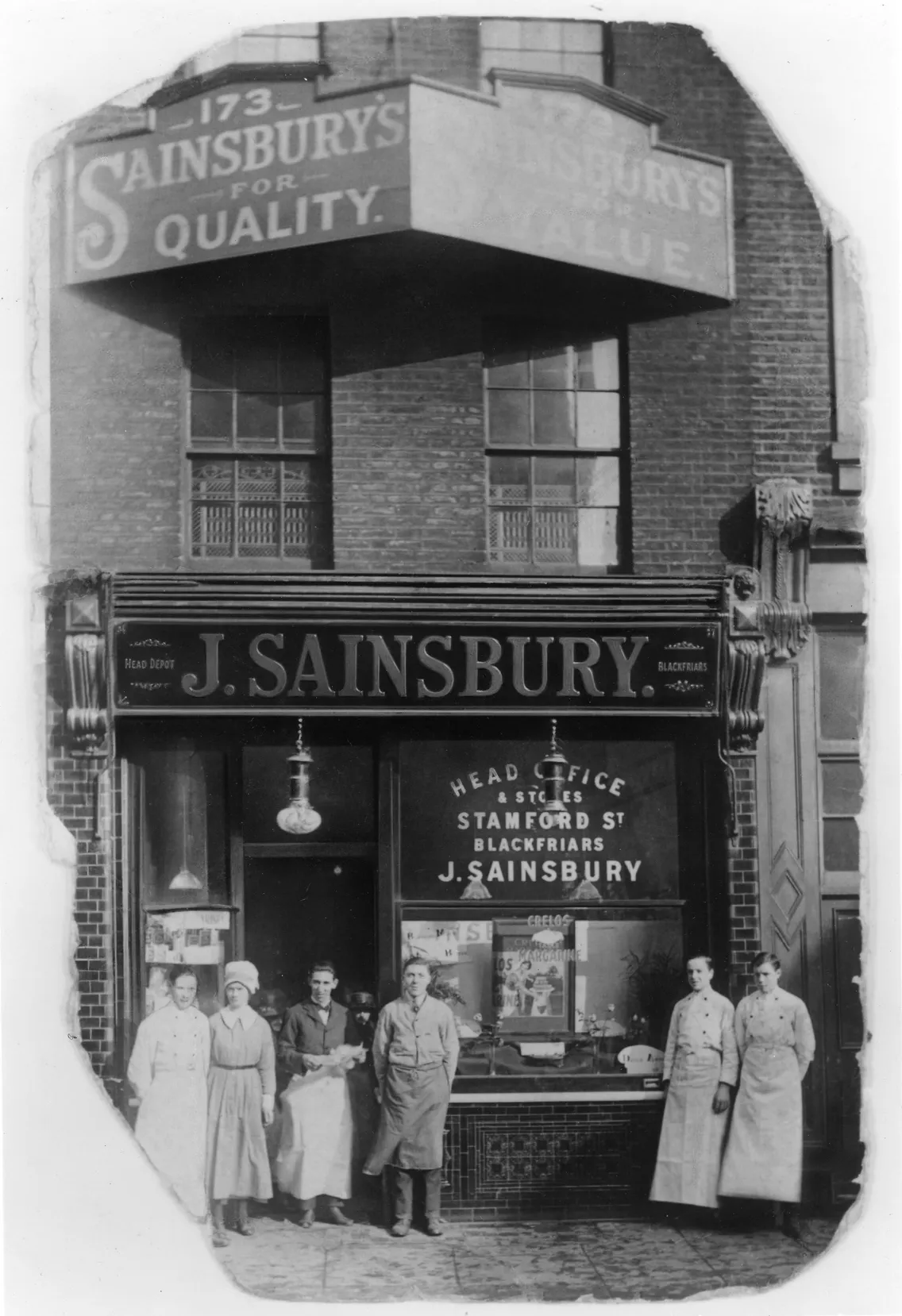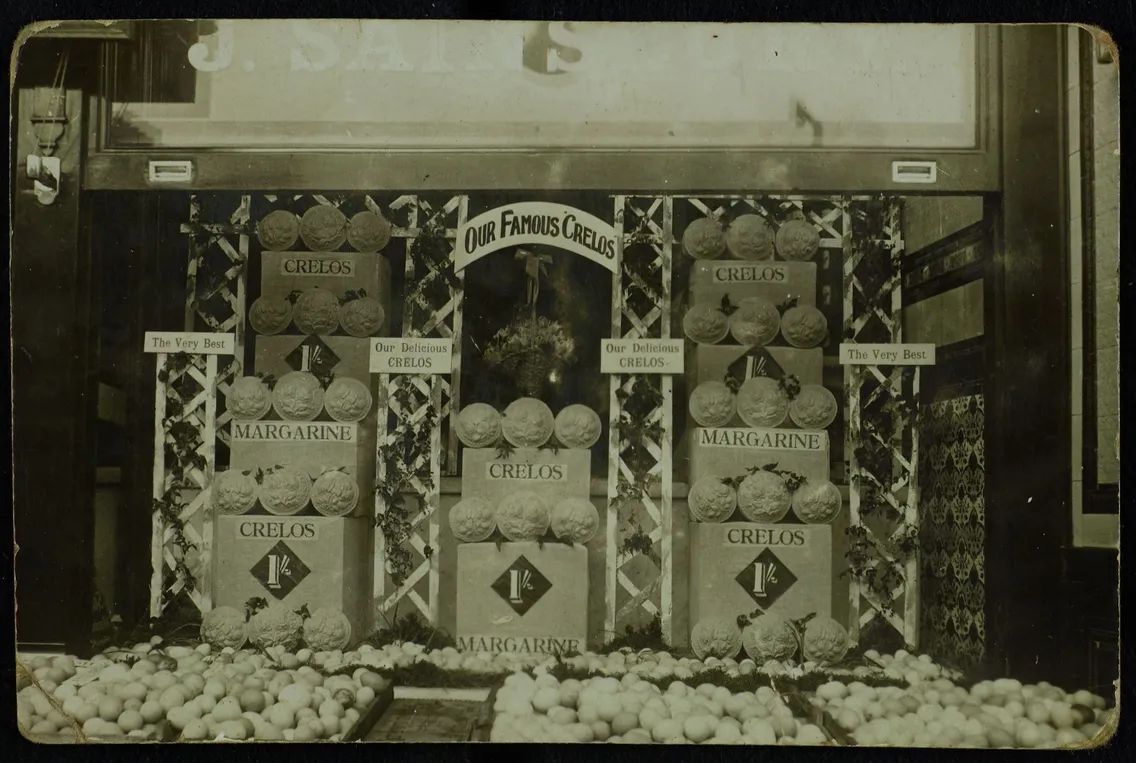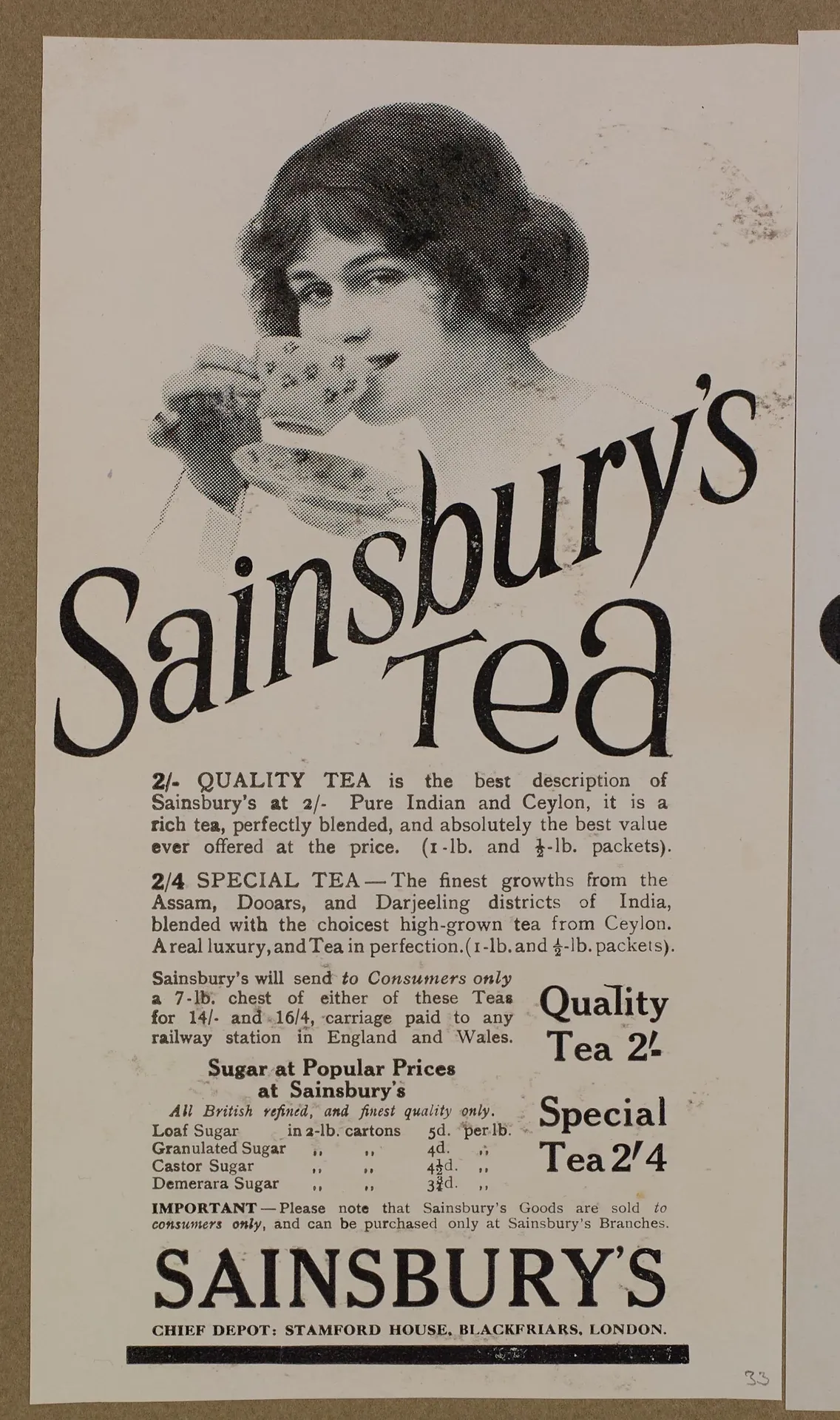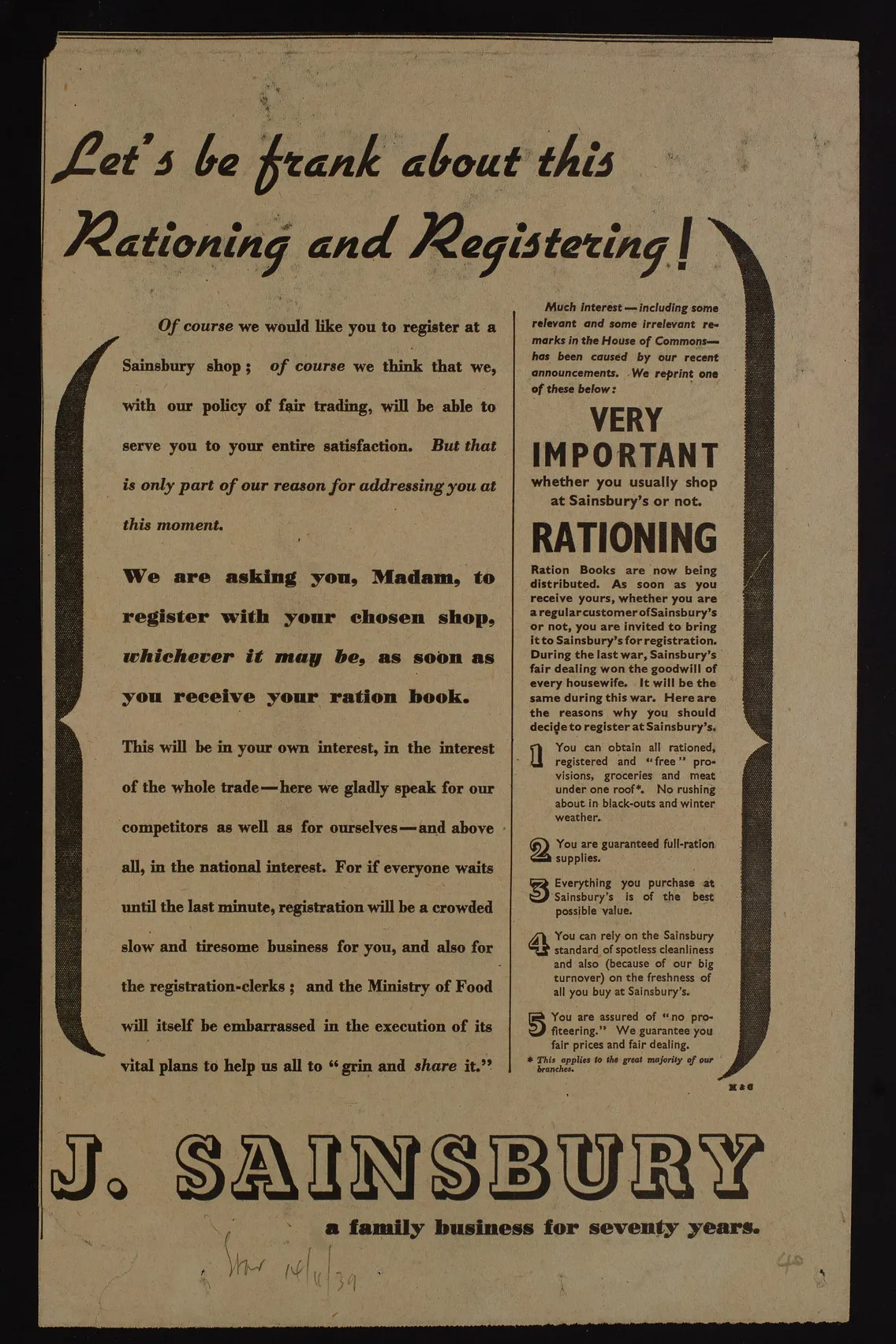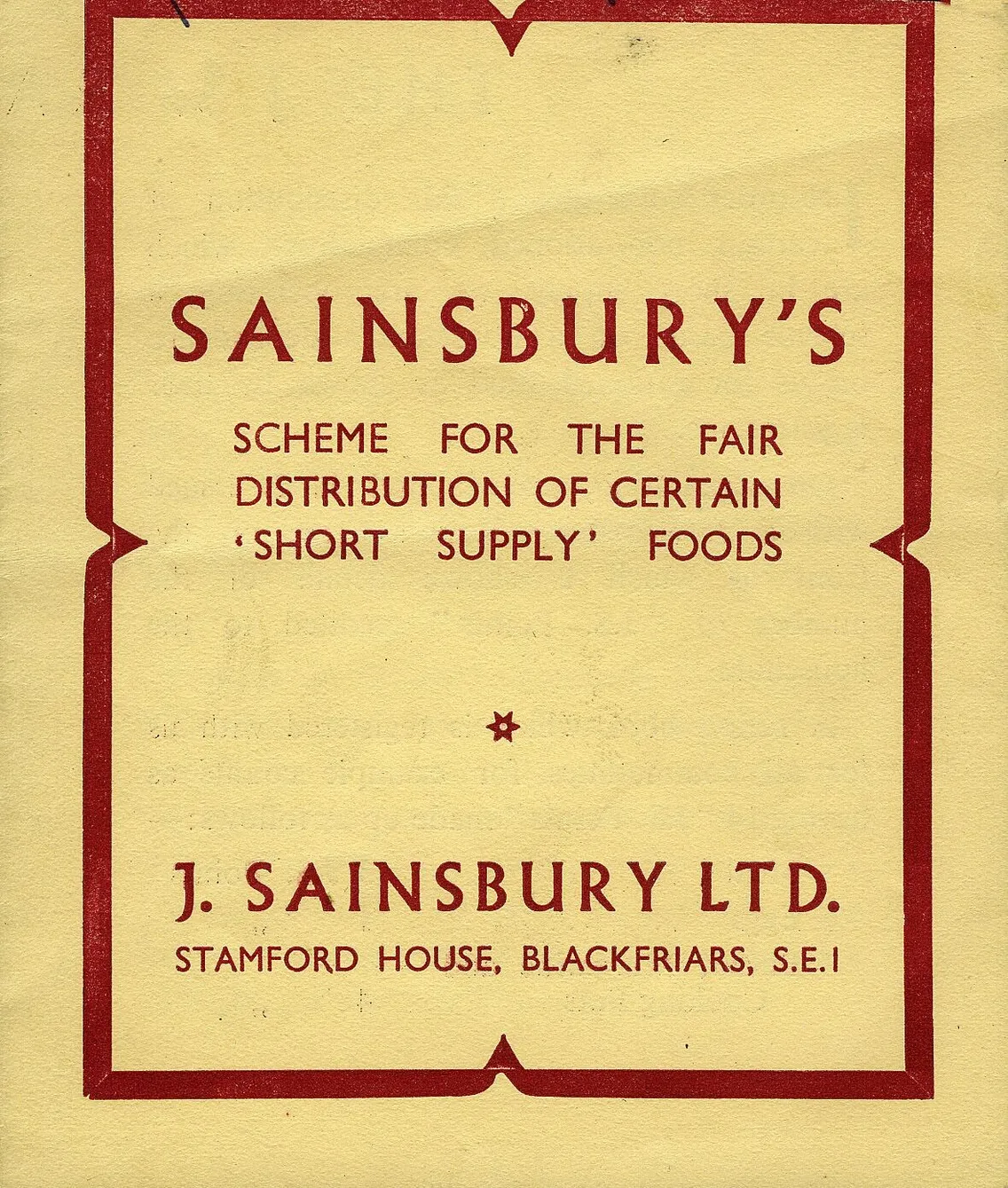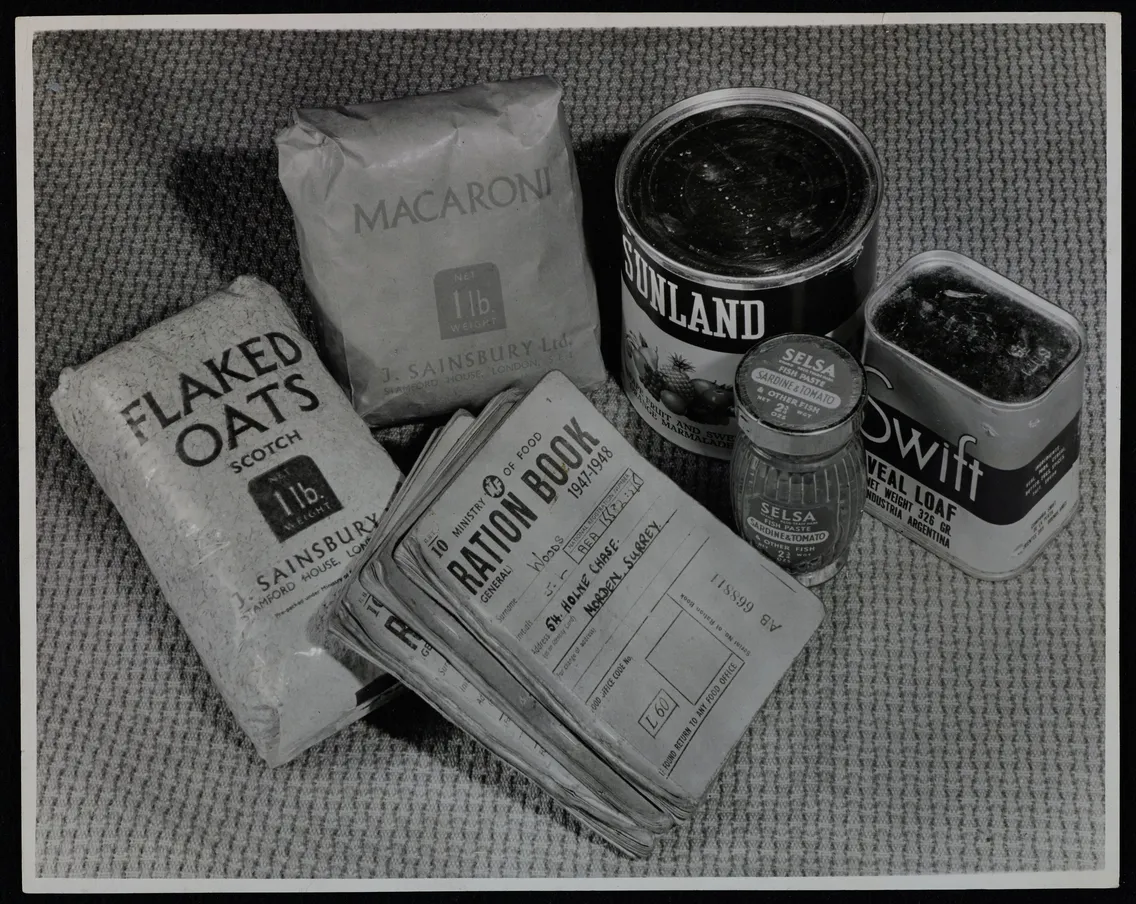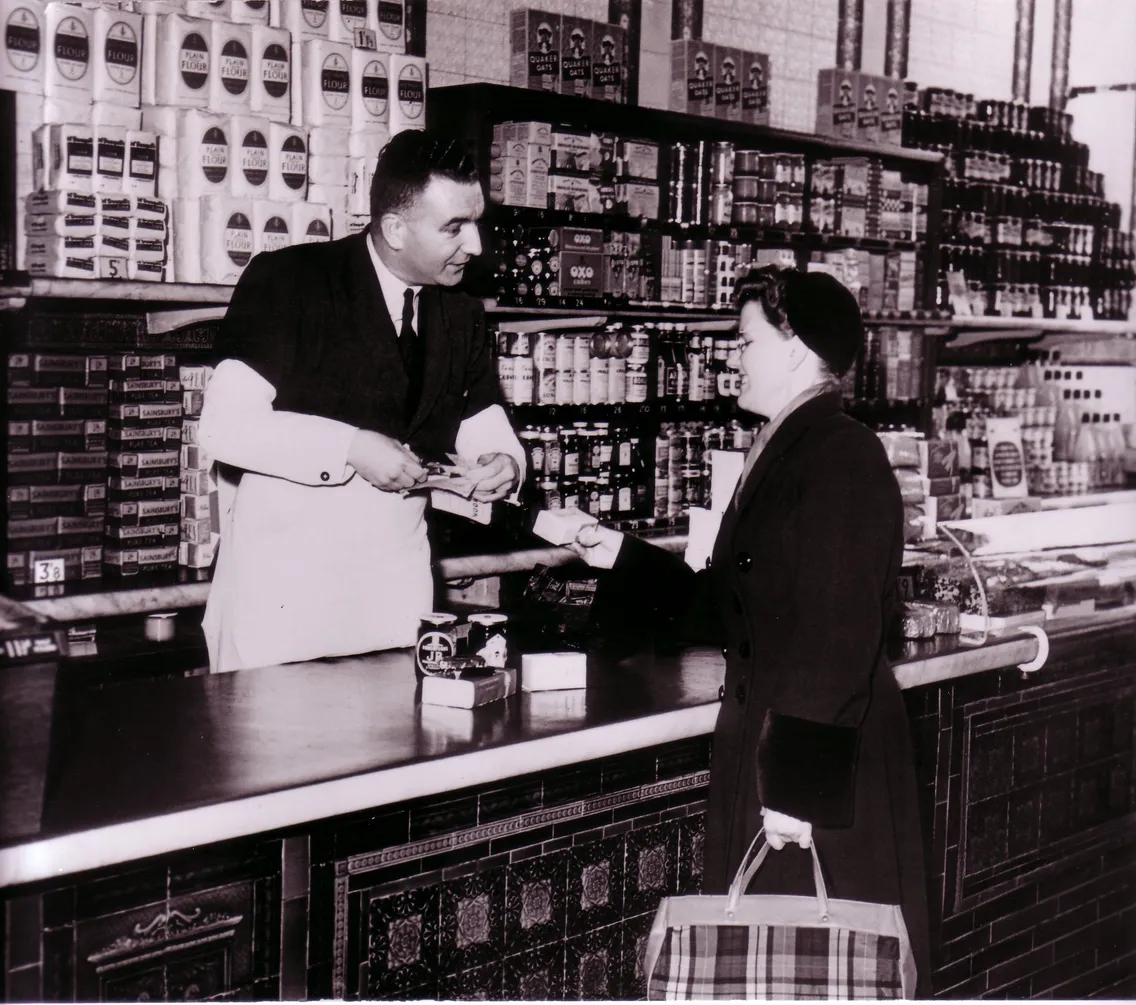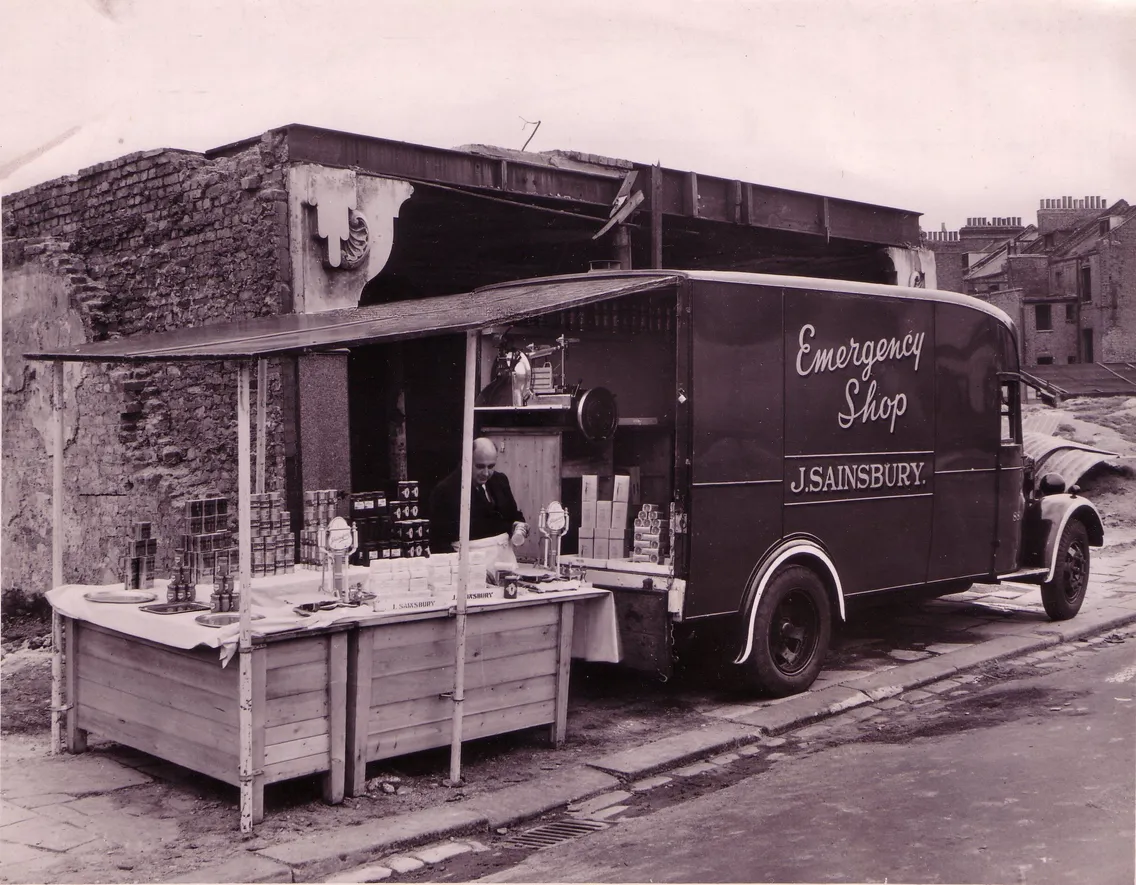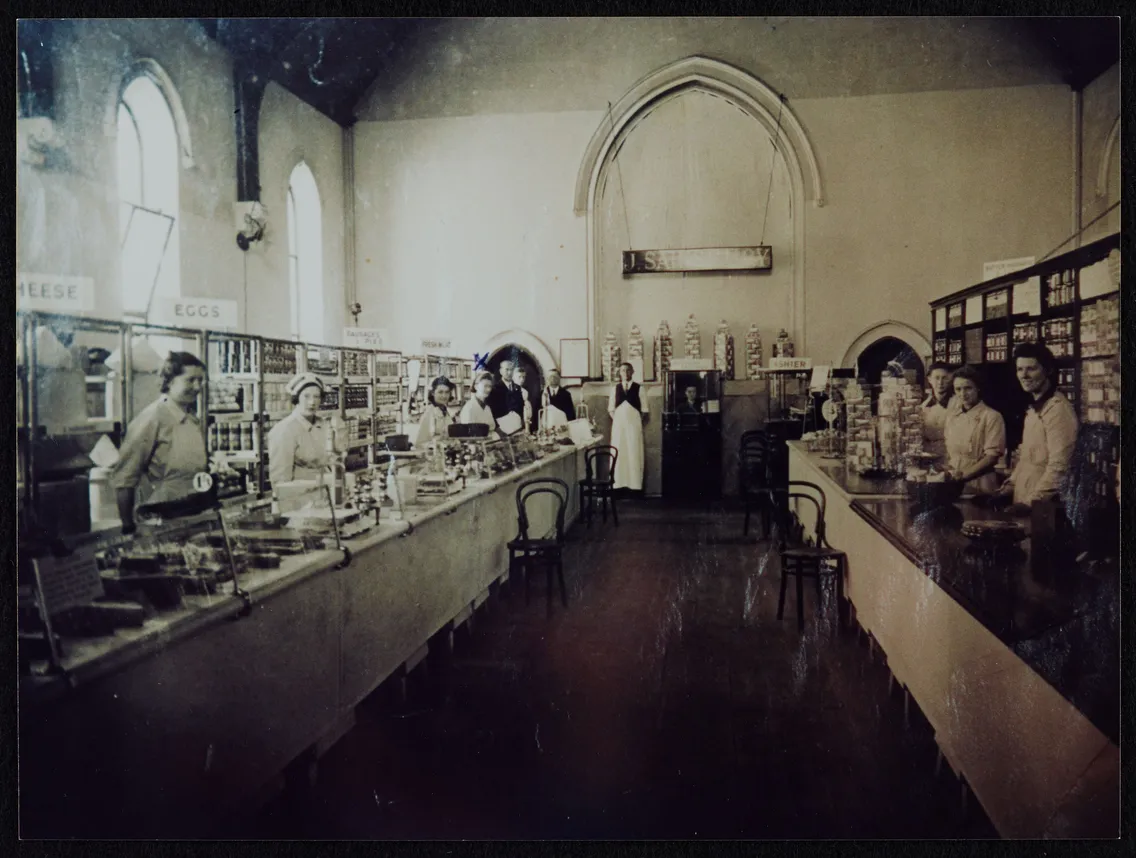03 August 2023 — By Sainsbury Archive team
Food rationing & wartime trading at Sainsbury’s
Going through the Sainsbury Archive’s records, we get many fascinating insights into the impact of the First and Second World Wars on food retailing – from rationing to setting up emergency shops during the Blitz.
In the over 150-year history of the UK’s second-largest supermarket, Sainsbury’s has lived through several world-altering events that have had both a financial as well as operational impact on the company. The most significant of these was trading during the two world wars. Living in a post-Covid-19 era, one can find many parallels – not only in human behaviour (such as stocking up!), but also in how the business had to adapt to new requirements of rationing food.
Going through The Sainsbury Archive’s records, based at London Museum Docklands, we get many fascinating insights into the impact of both world wars on food retailing – from opening a shop in a church or mobile van to introducing creative ‘points’ schemes. Here, we revisit some of these decisions that give us a peek into food trading during the First and Second World Wars.
First World War: Food supply and shortages
Before World War I, over 75% of the butter, cheese, eggs and bacon consumed in the UK came from overseas. The outbreak of war brought an urgent need to cut imports to save foreign currency, and to reallocate shipping to the war effort. Food shortages, therefore, became a serious issue.
As soon as war was declared in July 1914, Sainsbury’s posted notices in all its branches stating that regular customers would be kept supplied, and warning against hoarding. Despite this, queues formed as worried customers stocked up on basic food items.
Panic buying hiked prices of imported provisions, particularly sugar and butter. Regulations were put in place: managers were instructed not to sell more than 2lbs of sugar. Customers were encouraged to settle their accounts promptly. John Benjamin Sainsbury, responsible for the company’s day-to-day running during the First World War, wrote to the managers: “I have to pay cash for all goods, and must ask my customers to do likewise.”
With the rising price of imported butter, margarine became an important product. Sainsbury’s ran a huge campaign encouraging people to switch to its own margarine brand ‘Crelos’, describing it as “the most delicious, digestible and economic form of fat food you can buy”.
Rationing during the First World War
In October 1917, a government scheme for the distribution of sugar was introduced. Customers had to register at a shop, and the number of registered shoppers determined how much sugar the shop was allowed to buy. However, supplies were not guaranteed and ran out very quickly.
In January 1918, rationing was introduced for butter and margarine, with other products being gradually added. Long queues formed when deliveries of high-demand goods were made. Short-supply goods were described in coded “back slang” (for instance, ‘nocab’ for bacon), to avoid uncontrollable behaviour. This did not always work, however, and sometimes the police even had to be called.
Profit margins were squeezed and cost increased. It was not until 1920–1921 that food retail was freed from restrictions and Sainsbury’s profits returned to earlier levels.
Second World War: Communication and distribution
Preparations for food rationing during the Second World War began in November 1936 when the Ministry of Food was set up. Registration began in November 1939 and food ration books were issued.
The ministry set up local food offices to implement government regulations. Sainsbury’s set up its own rationing department at its London head office. The regulations were communicated within Sainsbury’s through a new network of “contact clerks”, who telephoned selected branches as soon as they had been notified by the ministry of a change in the system. These branches were then responsible for passing the messages on to a further group of shops in their area.
This contact clerk system was so efficient that many local food offices discovered it was quicker to telephone Sainsbury’s rationing office for information than other official channels!
Second World War: Registration for rationing
At the beginning of November 1939, families were instructed by the Ministry of Food to register with a retailer. As registration committed a customer to using a particular shop, Sainsbury's was anxious to obtain as many registrations as possible.
The paperwork was complex. William Guest, branch manager at 66 Watney Street, was inundated with customers unable to fill in their ration books. This caused the staff at the small branch so much additional work that he applied to the district supervisor for help. Guest recalled, “The very next day a taxi drew up outside and out stepped Miss Potter and a group of her clerical staff. They loaded the ration books into the taxi and took them to Blackfriars [Sainsbury’s headquarters], returning 24 hours later with a perfectly ordered filing system and several thousand ration books immaculately filled in.”
The system was extremely complex as products were rationed at different times and in different ways (such as weight or product type). Butter, bacon and sugar were rationed in January 1940, meat and preserves in March, tea, margarine and cooking fats in July, and cheese in 1941. Special allowances could be made for expectant mothers, babies and the elderly.
Sainsbury’s also introduced a Fair Shares scheme to ensure that goods in short supply – such as sausages, cake, meat pies, blancmanges and custard powder – were distributed evenly. Customers were allocated a number of points, according to the number of rationed goods for which they were registered. The scheme encouraged customers to register for all rationed goods at Sainsbury's.
The scheme was noted by the Ministry of Food, which introduced its own ‘points’ scheme covering a wide range of grocery lines in December 1941.
Rationing continued long after the end of the war – finally ending in 1954, when bacon and meat came off the ration.
Air raid trading: London Blitz
Food rationing wasn’t all that the company had to tackle. When the Second World War was declared in September 1939, air raid procedures were immediately sent to branch managers. Staff were instructed to close their shops during an air raid and direct customers to the nearest air-raid shelter. In reality, many customers stayed on the premises, sheltering in the basement on benches made from egg stall boards. Where no basement was available, it was suggested that “quite good cover is to be had beneath the counter or the back shelf”.
Members of staff often displayed great determination, despite the raids. A customer at Walthamstow recalled queuing up outside the wrecked shop after a bad night of bombing, to find that the elderly manager had been there since 2am, “dusting the bacon and scraping soot etc. off the margarine”.
Over the course of the war, there were around 600 incidents of bomb damage to Sainsbury's stores.
Sainsbury’s created a contingency plan in case of an enemy invasion. Branches within 30 miles of the coast received detailed instructions to requisition a branch van and take cash and valuables to an alternative branch or depot.
East Grinstead ‘shop in a church’
On 9 July 1943, an enemy aircraft bombed and opened fire upon several buildings in East Grinstead’s High Street, including the cinema and an ironmonger’s shop with 500 gallons of paraffin in its basement store.
The fuel exploded and the blast swept through the parade of shops, causing the rear of Sainsbury's branch at 37-39 London Road to collapse. The final casualties numbered 108 killed and 235 injured, one of the highest civilian losses in the country. The Sainsbury’s shop had not been destroyed, but it was unsafe to enter. For six weeks, Sainsbury’s traded from a temporary shop inside a disused Wesleyan Chapel in London Road. A year later, on 12 July 1944, the shop was completely destroyed by a V1 bomb. A delivery van from Blackfriars was supplied and fitted out as a travelling shop, complete with weights, scales and counters. The emergency shop served customers, while the disused chapel was refitted as a Sainsbury's shop. This ‘shop in a church’ continued to trade until 1951, when a new self-service store was opened.
This is an edited excerpt from the Wartime Trading article from the Sainsbury Archive. Find out more about the archive and the story of Sainsbury’s in wartime on their website.



